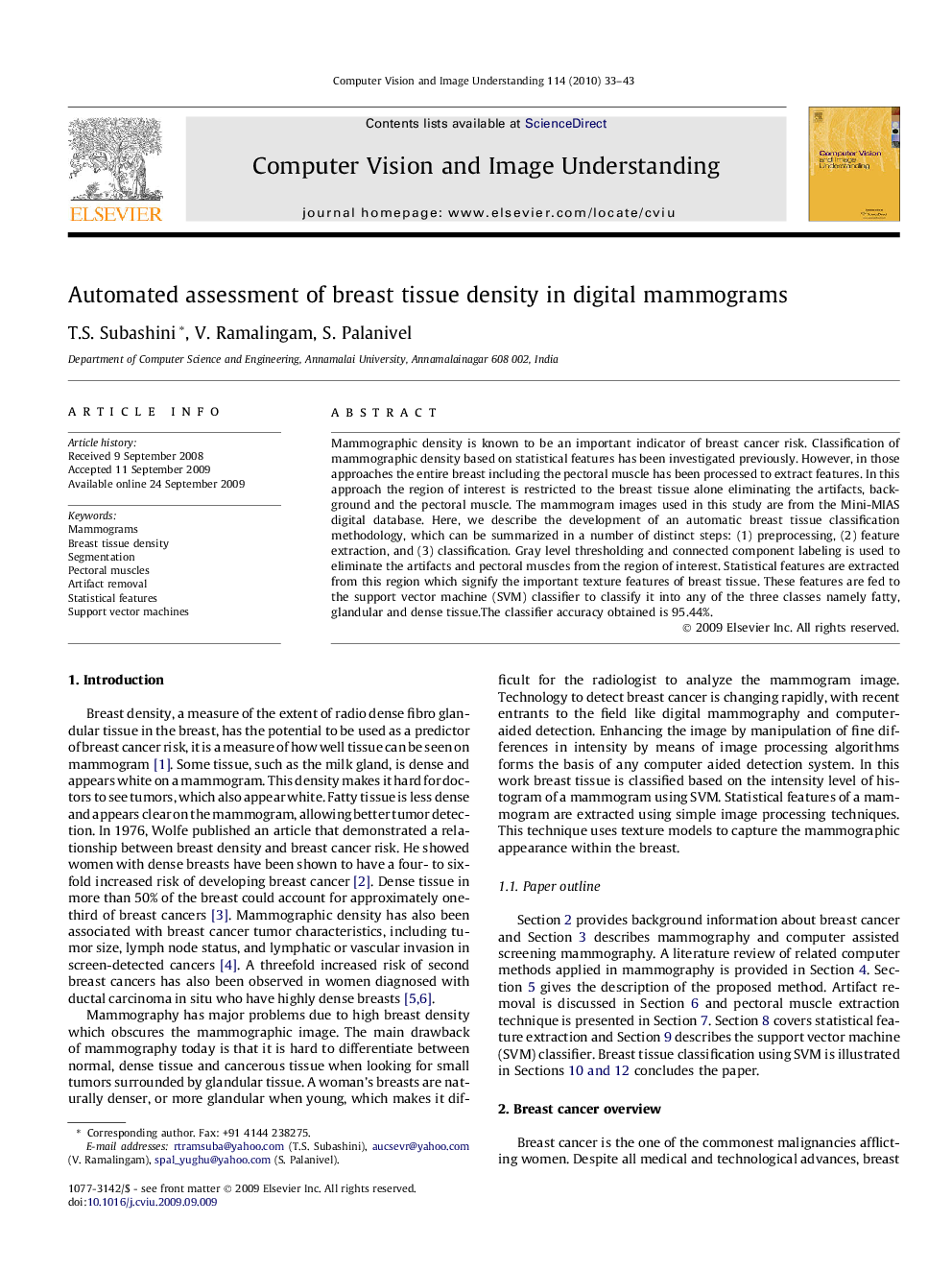| Article ID | Journal | Published Year | Pages | File Type |
|---|---|---|---|---|
| 525920 | Computer Vision and Image Understanding | 2010 | 11 Pages |
Mammographic density is known to be an important indicator of breast cancer risk. Classification of mammographic density based on statistical features has been investigated previously. However, in those approaches the entire breast including the pectoral muscle has been processed to extract features. In this approach the region of interest is restricted to the breast tissue alone eliminating the artifacts, background and the pectoral muscle. The mammogram images used in this study are from the Mini-MIAS digital database. Here, we describe the development of an automatic breast tissue classification methodology, which can be summarized in a number of distinct steps: (1) preprocessing, (2) feature extraction, and (3) classification. Gray level thresholding and connected component labeling is used to eliminate the artifacts and pectoral muscles from the region of interest. Statistical features are extracted from this region which signify the important texture features of breast tissue. These features are fed to the support vector machine (SVM) classifier to classify it into any of the three classes namely fatty, glandular and dense tissue.The classifier accuracy obtained is 95.44%.
